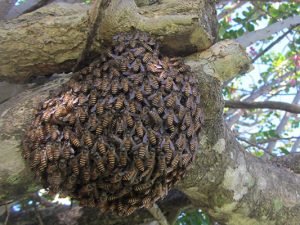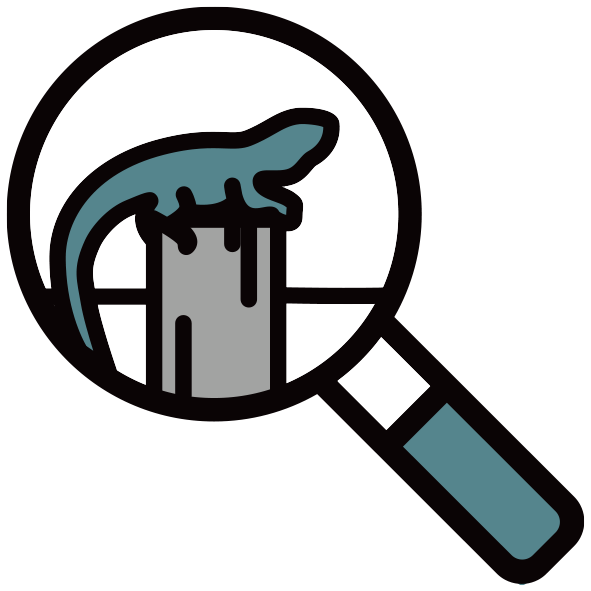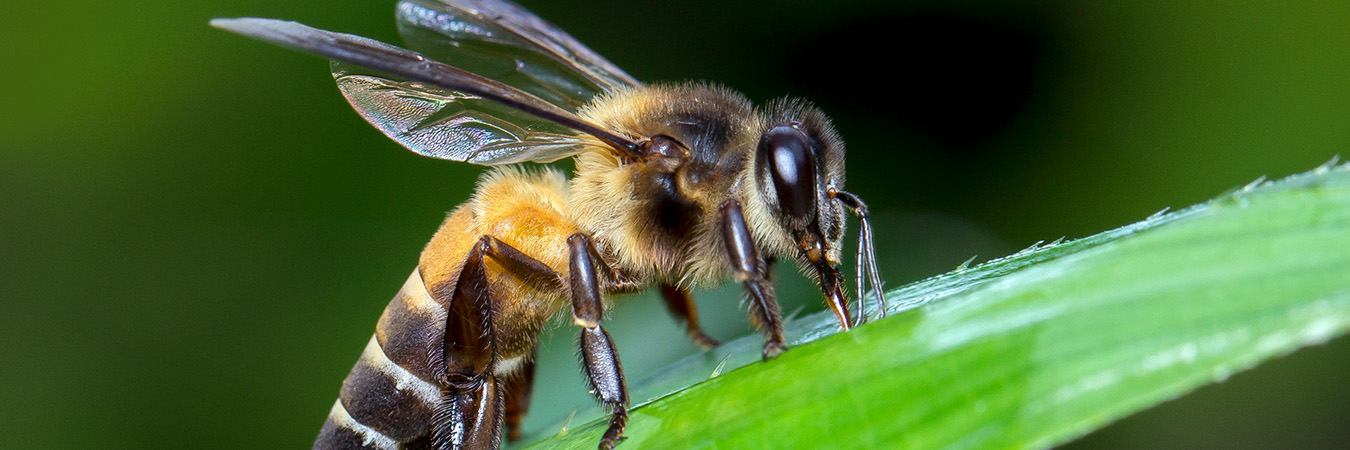NSW biosecurity and the beekeeping industry are on the lookout for exotic bees that may impact the health of our beekeeping, with flow on effects to pollination reliant horticulture industries.
Why is recognising exotic honey bees important?
Exotic bees entering Australia could be a vector for an exotic pest or disease not established within Australia. They can also compete for food source, upset the natural balance for other native bees and insects and in turn may have impacts on other native species.
Some exotic bees are very similar to our European honeybee (Apis mellifera), simply with some undesirable genetics such as African and Africanised honey bees (Apis mellifera scutulatta), or disruptive behaviours such as the Cape honey bee (Apis mellifera capensis) which will take over a European hive.

Dwarf honey bee (Apis florea)
Dwarf honey bees
Dwarf honey bees (Apis florea) are not a cavity nester and will colonise on small branches in trees. They are not a large colony but are mobile and will move to search for better conditions so quite mobile and swarm readily.
Giant honey bee
The giant honey bee (Apis dorsata) is a large bee and can have a colony size of around 60,000 bees. Giant honey bees build large single combs in open spaces or along rock faces and will migrate some distance building combs along the way. These bees have the ability to spread readily and compete for resources.
Asian honey bees

A swarm of Asian honey bees in Cairns, Queensland.
(Photo: Courtesy R. Gloag)
Asian honey bees (Apis cerana) are present in Queensland, creating a significant risk for entry to NSW as well as coming through shipping or boat movements from overseas. Asian honey bees are quite distinct with the banding around the abdomen and smaller in size to the European honey bee. They fly faster and more erratically though, in a swarm cluster, look quite uniform and orderly.
The discovery of Asian honeybee in Queensland carrying Varroa (jacobsoni) has heightened surveillance efforts for swarms or colonies to be found and checked for Varroa.
Observations of flowering plants that are attractive to foraging bees is a step to finding nests. If you are an active person who enjoys an early morning or mid to late afternoon walk or jog through your surrounds, stopping at flowering plants or patches of flowering plants and watching for 5 -10 mins for the presence of bees could be an invaluable contribution to the detection of an exotic bee.
What’s that bee?
Download the Basic guide to identifying exotic bees for your guide to identifying these exotic bees.
How reporting can help
If you suspect you may have found an exotic bee try and take a photo or sample and report it to the Exotic Plant Pest Hotline 1800 084 881.
By becoming involved in peri-urban surveillance you may be the key to an early detection and possible containment of an exotic pest or disease. You will also be hindering the pathway between the city and the rural farming communities and economies that may be impacted.
Importantly, if in doubt, still report! Reports that don’t turn out to be exotics still provide us with useful data that underpins pest-free status in many areas of agriculture, supporting access to global trade and overseas improved returns for our clean and green products.
Further Information
- Asian Honey Bee manual – QLD Department of Agriculture
- Asian Bees Factsheet 2011 – NSW Department of Primary Industries
- National Bee Pest Surveillance Program – Plant Health Australia
Acknowledgements:
- About the author Mark Page

